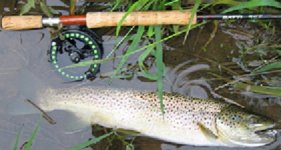marcq
Member
- Joined
- Apr 21, 2009
- Messages
- 846
im putting this here because i dont know where else it should go. my goal of this year is to catch a wild trout that is larger then 20 inches this year. i know there are streams that hold large fish like the del and penns but what about the streams that are not know for having large fish, but have a wild population? there should be a few big fish in there right.
in the upper del there is a good population of big brown trout. do the fish spawn in the main river or do they spawn in the tributaries?
we are now in the winter months, do the fish go into the smaller streams for some reason or do they stay in the river.
what are some holding area that big fish stay?
thanks marc
in the upper del there is a good population of big brown trout. do the fish spawn in the main river or do they spawn in the tributaries?
we are now in the winter months, do the fish go into the smaller streams for some reason or do they stay in the river.
what are some holding area that big fish stay?
thanks marc





